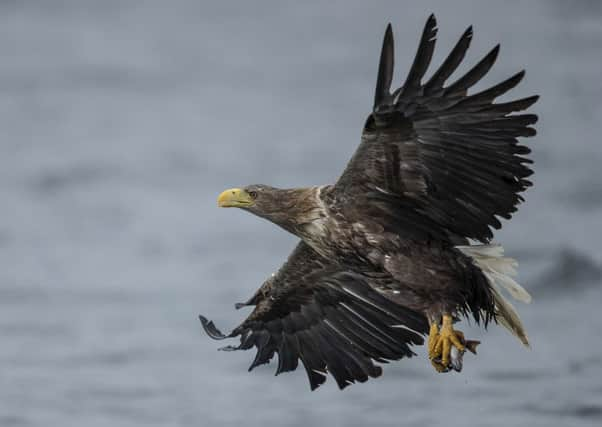Don’t introduce predators to the Sussex coast


Bordering the English Channel from Dungeness in the East to the Isle of Wight lies one of the most beautiful landscapes of England, the chalk hills of the South Downs, the contrasting reclaimed flat lands of the Romney Marshes, the very recently developed bird sanctuary of Rye Harbour and of course, the extensive Hastings Country Park.
Ecology, climate and economics determine how these lands can be maintained by human inhabitants.
Advertisement
Hide AdAdvertisement
Hide AdEnvironmentalists spend a great deal of effort, time and indeed tax-payers’ money trying to find new solutions for what is best for the countryside.
An experiment in Scotland proved successful by improving the conditions of rivers for spawning salmon.
A following experiment introduced protected White-tailed Sea Eagles, resulting in the showing of one of these large predators carrying away a large fish (believed to be a salmon) in its talons.
Much more disastrous was to watch the film of a While-tailed Sea Eagle with a healthy new born lamb being carried into the sky, presumably to feed a nest of young chicks.
Advertisement
Hide AdAdvertisement
Hide AdThe Highland farmer alleged that over 100 healthy lambs had been removed from his flock in this manner, and one saw large inflated gadgets being erected to frighten these hungry birds away.
Sheep have to be checked every day of the year and is a 24/7 hour occupation during the lambing season. These fine animals are suited to the grasslands of the Highlands of Scotland and England, including the chalk lands of the South Downs.
Hence one’s concern when a plan has been made to introduce White-tailed Sea Eagles onto the Isle of Wight before proceeding to extend their introduction to the coastal areas to the East of the island, which could affect the areas mentioned above.
Before approval is given for such an expensive ecological disastrous experiment, those who inhabit this area by farming, fishing, people catering for visitors and all who contribute to keeping it economically viable and beautiful should be consulted adequately and given the opportunity to concede or reject the proposed invasion of enormous predators which could cause fundamentally disruptive changes for a very long time to come.